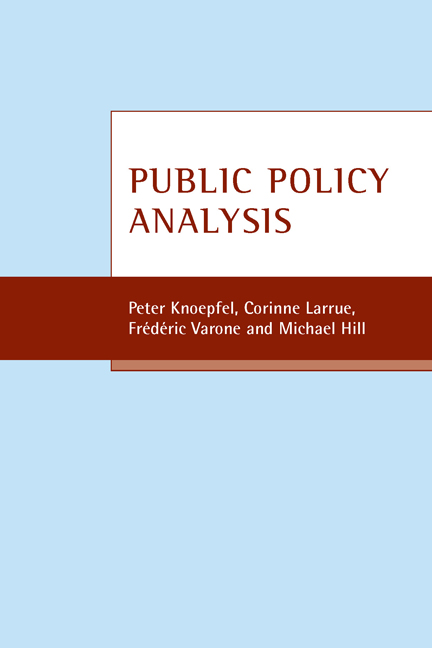Part III - Analysis model
Published online by Cambridge University Press: 14 January 2022
Summary
Part III presents in detail the logic behind our analysis model and the variables and hypothesis that constitute it. Our approach is designed to take into account both substantive (‘how can the public problem be resolved’) and institutional (‘which actors will get involved, which resources are required and which institutional rules apply?’) dimensions.
We start this section of the book by presenting the framework that facilitates the empirical analysis as part of a comparative approach (Chapter Six). This is followed by the definition of the dependent variables (or social phenomena to be explained) based on the four main stages of a policy: agenda setting (Chapter Seven), programming (Chapter Eight), implementation (Chapter Nine) and evaluation (Chapter Ten).
In the context of these policy phases, we identify six types of products to be analysed:
1. The political definition of the public problem (PD).
2. The political-administrative programme (PAP).
3. The political-administrative arrangements (PAAs).
4. The action plans (APs).
5. The formal implementation acts (outputs).
6. The evaluative statements on the changes in target group behaviour (impacts) and on the effects achieved in terms of the resolution of the problem (results or observable outcomes among end beneficiaries).
These six products are analysed in each of the above-listed chapters in terms of their substantive and institutional dimensions.
The last chapter of Part III (Chapter Eleven) presents the different working hypotheses on the possible links between these different products, the games played by public and private actors, the resources mobilised and the (general and specific) institutional rules associated with policies. Chapter Twelve provides an overall conclusion to the volume.
- Type
- Chapter
- Information
- Public Policy Analysis , pp. 111 - 112Publisher: Bristol University PressPrint publication year: 2007



